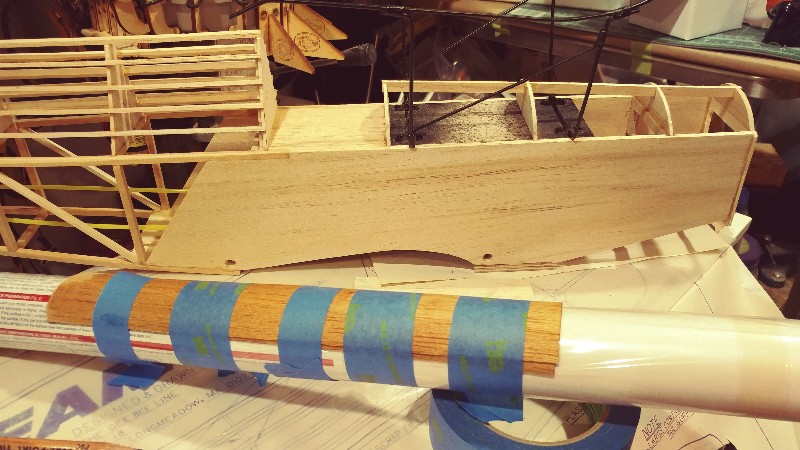No more pictures tonight, but I got the new servo tray mounted in a much better position so the control cables and full range of servo motion will be fine. I also drilled the landing gear for the axles and got some 2-3/4" balloon tires installed. And after a few more spots of filling and sanding to make sure everything is smooth tonight, I'm ready for covering next.
I've got a covering idea in mind now. Something like the "Rides" Stearman in this picture, but with green and white Ultracote and black pinstriping. I'll do the bottom of the wings and stabilizer as white with a single wide green stripe parallel to the fuselage.
I can't really offer rides with a single seater

So I'm going to do up a Cape May Brewery graphic on the side (a favorite place to visit when at the beach). Graphics ready for a test print and eventual vinyl cutting below - brewery logo on the fuselage sides, Gee Bee Dreamer logo on the nose, and penguins somewhere - vertical stab perhaps?

I also dug out a FrSky S6R receiver from the drawer for this build, and flashed it to the most current firmware. I'm not sure if I'll actually use the stabilizer function - I have one of these on my Ugly Stick but I almost never turn stabilization on cause it doesn't really seem to have much impact on how it behaves. But it might be nice to have for the biplane - and even without using the stabilizer function it's a solid receiver.

So yeah, I've almost got everything I can done before the covering goes on. Except maybe painting the cockpit black - that would be better before there is covering involved. So here's the updated list:
- Paint cockpit interior
- Install aileron servo extension wires (since I didn't build the bottom wing, I need to retrofit some wiring tubes)
- Covering
- Cut and install vinyl graphics
- Make fiberglass cowl
- Paint cowl - color match to green covering?
- Add cowl screw brackets to motor pod
- Final assembly of parts (landing gear, wing holding dowels, control horns, hinges, etc)
- Connect all the electronics
- Balancing












































